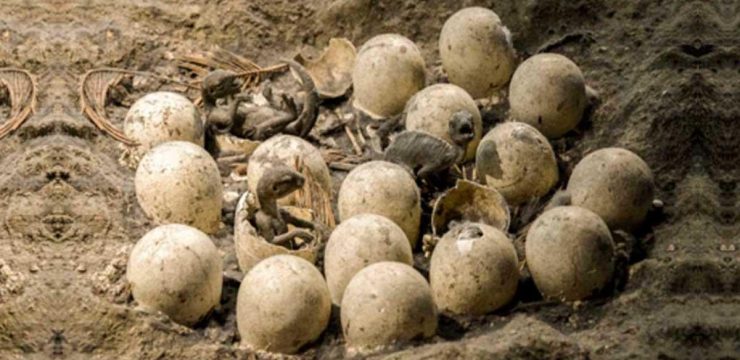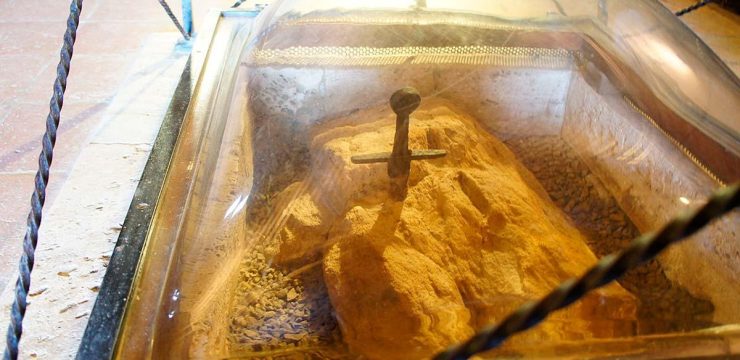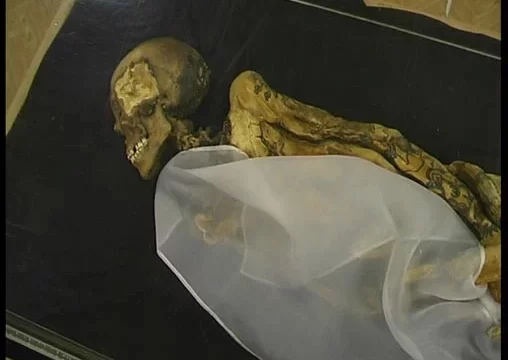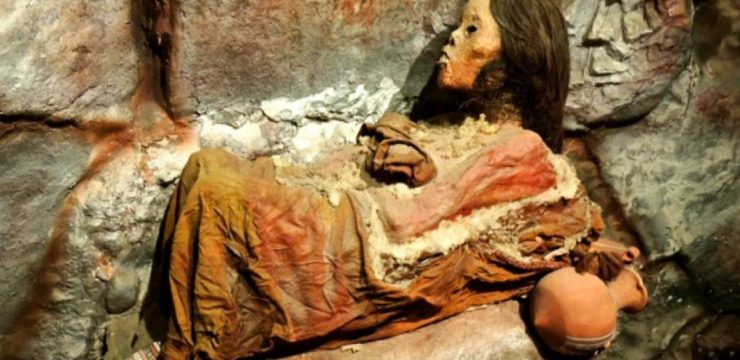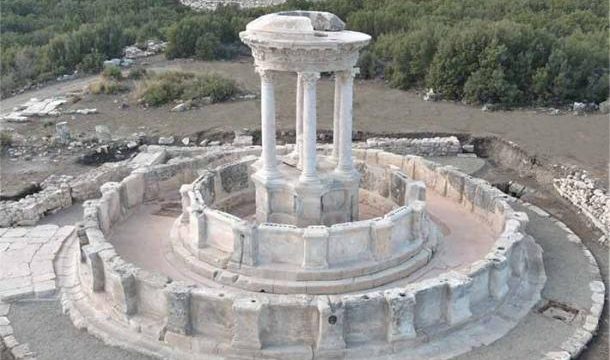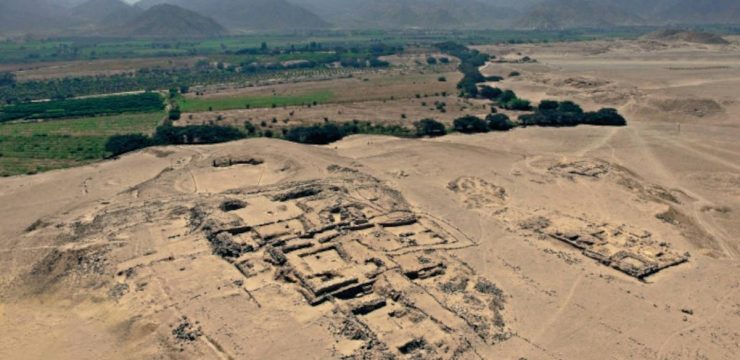In an extraordinary archaeological find, researchers have uncovered the skull of a male warrior, believed to be between 40 and 50 years old. What sets this discovery apart is the presence of an iron nail driven obliquely through the skull, a clear indication that it had been used for public display. This detail provides powerful insight into a long-standing ritualistic tradition practiced by ancient Gallic societies along the Mediterranean, as well as by the northern Iberian tribes—particularly those residing in what is now Catalonia. These communities had a unique and symbolic way of exhibiting power, especially after emerging victorious in battle.
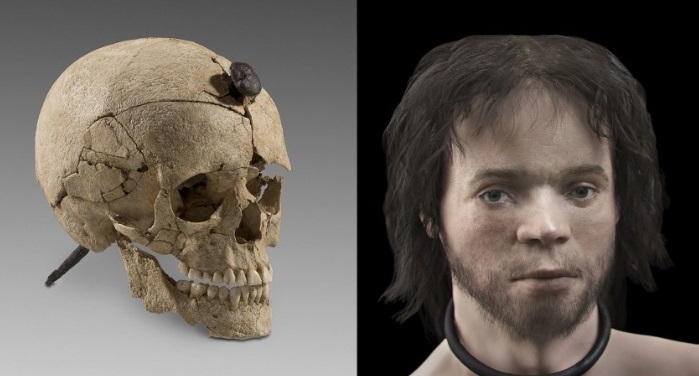
Displaying the heads of defeated enemies was not merely an act of brutality; it was a deliberate and highly ritualized custom rooted in their culture. After a battle, warriors would decapitate fallen opponents and carry the heads back to their homes. There, the skulls—along with the weapons of the defeated—would be put on public display. These macabre trophies were often hung on exterior walls, porches, or in courtyards as a powerful statement of dominance and bravery. Far beyond the act of killing, this practice was a proclamation of the warrior’s status and the triumph of his people. It was both a celebration and a warning, a deeply ingrained tradition meant to instill respect and fear in equal measure.
The site where this particular skull was found is Ullastret, located in the Baix Empordà region of Catalonia, Spain. This location is widely recognized as the largest Iberian settlement ever discovered in Catalonia. It dates back to around 550 BC, during the Iron Age, a time when cultural and military rituals played a crucial role in daily life. Ullastret stands as a remarkable window into the ancient world, particularly into the customs and societal structure of the Iberian people who once inhabited the region. The town’s size and complexity indicate it was a major center of commerce, governance, and religious activity.
The inhabitants of Ullastret were known as the Indigetes, one of the most prominent ancient Iberian groups in northeastern Spain. They spoke the Iberian language, which remains partially undeciphered today, and were known for their fierce independence and well-developed warrior culture. The ritual of severing and displaying enemy heads was not random violence—it reflected deeply held beliefs about honor, warfare, and the afterlife. To the Indigetes, the head represented not just the seat of thought and identity, but also a spiritual vessel. By capturing and preserving a warrior’s head, they believed they had also seized some of his strength and spirit.
This striking ritual practice is now the focus of a new exhibition at the Museu Arqueològic d’Ullastret, an institution devoted to preserving and interpreting the rich history of the Iberian world. The exhibition centers around these severed skulls—referred to in Latin as crania—and showcases not only the archaeological artifacts themselves but also the cultural context surrounding them. This exhibit seeks to provide visitors with a deeper understanding of the symbolic weight these relics carried. The opening of the exhibit is marked by formal addresses from Ferran Mascarell, Councilor of Culture, and Joan Pluma, a leading figure in the field of Catalan heritage. Their participation underscores the cultural and historical value of these findings and their significance in understanding regional identity and heritage.
The story of the Indigetes, however, did not end with their display rituals. In 218 BC, their world was dramatically altered by the arrival of the Romans, as part of Rome’s broader campaign to conquer Hispania. The Roman conquest brought with it new systems of governance, military organization, and cultural norms. While the Indigetes initially came under Roman control, their resistance did not end there. In 195 BC, the people of Ullastret rose in rebellion against Roman authority. Unfortunately for the Indigetes, this uprising was short-lived. The Roman consul Marcus Porcius Cato led a swift and decisive military response that crushed the rebellion and solidified Rome’s hold over the region. This defeat effectively ended the autonomy of the Indigetes and marked the decline of their unique cultural practices, including the display of enemy heads.
Nevertheless, the legacy of the Indigetes lives on through the archaeological remnants they left behind—settlements, tools, weapons, and now, this remarkably well-preserved skull. These discoveries allow modern researchers and the public alike to peer into a complex and sophisticated society, one that placed high value on bravery, ritual, and remembrance. The practice of displaying human skulls, though unsettling to contemporary eyes, was a key component of their worldview and social hierarchy. It was both a personal act of pride and a communal affirmation of victory and honor.
Understanding these practices gives us a richer perspective on the values and beliefs of ancient Iberian cultures. It sheds light on how early societies understood death, warfare, and the concept of legacy. In displaying the heads of their enemies, the warriors of Ullastret were not simply showing off their conquests; they were participating in a sacred tradition that bound the community together through shared symbols of courage and conquest.
This skull, pierced by an iron nail and marked by time, is more than just a relic—it is a silent witness to a world where ritual, warfare, and identity were intimately entwined. As it takes its place in the museum’s new exhibition, it will continue to speak to generations of visitors about the lives and beliefs of a people long gone, yet not forgotten. Through careful research and preservation, the story of the Indigetes and their powerful customs continues to unfold, offering a deeper appreciation for the ancient cultures that once shaped the Iberian Peninsula.
